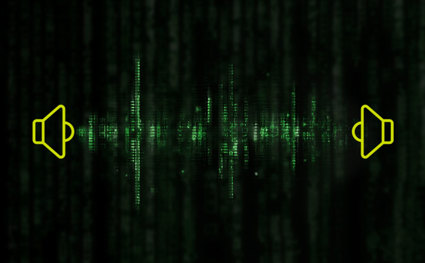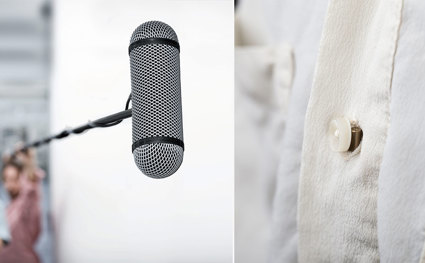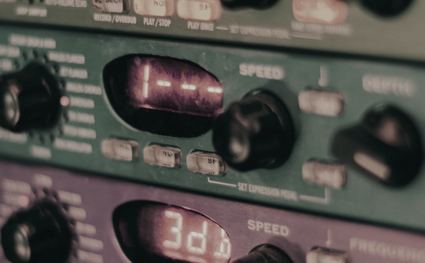Digital audio – your guide to handling audio with your iPhone
How high-quality digital audio helps improve your efficiency in the field and allows you to focus on the most important part of your job - telling the story.

From analog to digital
When a microphone captures sound, the mic capsule moves in response to the incoming sound and generates an electric signal. This signal will change amplitude continuously and produce a series of corresponding and fluctuating voltage information. Basically, this is the core of analog sound.
In order to convert the analog audio to digital, the voltage information has to be ‘translated’ to a binary code – zeroes and ones. This ‘translation’ happens by taking samples of the analog sound and, if we use standard CD audio quality as an example, the analog sound is sampled 44,100 times per second. This ‘sample rate’ determines to which extent the frequency spectrum is covered. However, you need to sample at twice the frequency of the highest sound in the audible spectrum. Since most of us were born capable of hearing frequencies up to 20 kHz, a sample rate of 44.1 kHz /44,100 samples per second) allows for sound reproduction of up to 22.05 kHz, which should be more than enough.
In theory, the concept is quite simple, but we’re really just scratching the surface. There are also things like aliasing, bit depth, jitter and quantization to consider. If you would like to dive further into the technical details of AD/DA conversion, we have created an in-depth article that delves deeper into the topic.
Audio editing made easy
The most important thing to keep in mind is that digital audio is much easier to edit than analog once it has been recorded. When working with digital audio editing software, it is easy to cut out questions or phrases that you don't want to be part of the final material. You can also copy and paste bits and pieces; moving them around as you see fit in much the same way you would do when writing an article.
Imagine editing an entire interview only using overdubs on analog recorders. You would need to spend a lot of time creating a strict plan to combine e.g. 0:35 – 2:24, 3:10 – 5:15, 6:02 – 8:40, etc., into a single, meaningful section.
In other words digital audio has made audio editing not only easier but also more intuitive and a lot faster.
But your job is to capture stories
Capturing what is being said is only a technical means to the goal of presenting a great story, but speech intelligibility is critical in this particular context. If the voice is not coming through clearly, important pieces of information that could make or break your story risk getting lost in background noise, hiss, a shirt collar or the wind. You may end up spending hours on editing together pieces or otherwise try to restore the important bits. Time you could have spent on preparing your next interview or field story.
As a mobile journalist, your main focus is – and always should be – on the story you are telling your audience. There are dozens of factors that could potentially break this focus but poor sound quality that needs a lot of post editing – or in the worst case a redo – should not be one of them.
Audio quality matters – choose the right device
So, why is audio quality important? Well, apart from saving you time optimizing the audio quality afterwards; it is also key with regard to speech intelligibility, which is paramount. Your audience needs to clearly hear what is being said.
As a mobile journalist, chances are that some of your stories will have to be captured in environments that are not exactly ideal for recording – e.g. sport events, demonstrations or on a noisy street – which puts extra demands on the equipment you use. This applies both to the technical side of things but also with regard to flexibility in terms of placing the microphone strategically to prevent picking up too much background noise. In general it is an advantage to place the microphone close to, or even on, the interviewee, for example using a clip-on microphone. And particularly in these cases, you rarely get a second chance to run with the story, making it even more paramount that what you do get back home is actually suitable for your final production.
In other cases, the physical conditions or various regulations may prevent you from bringing along large equipment even if you do have time to prepare the interview in advance.
Although high-quality microphones are extremely important in capturing intelligible audio, the next step in the recording chain is also critical. To translate analog audio to digital you need an interface – an A/D converter.


